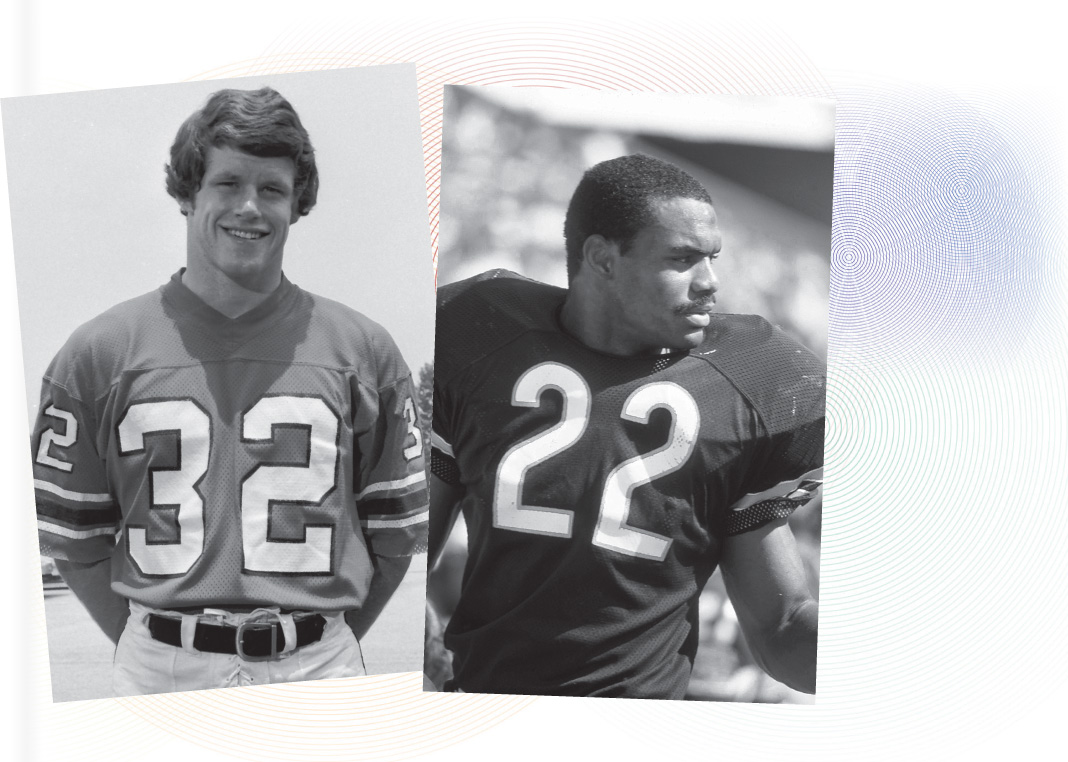Chapter Introduction
3
Neuroscience and Behavior

78
79
RAY EASTERLING AND DAVE DUERSON CAME from different times and places: Easterling, born in 1949, grew up in Richmond, Virginia; Duerson, born in 1960, grew up in Muncie, Indiana. But their lives as young men showed striking parallels. Both loved football and played the position of defensive back well enough to star in college and make it all the way to the National Football League. Easterling played for the Atlanta Falcons during the 1970s, part of the “Gritz Blitz” defense that set an NFL record in 1977 for the fewest points allowed in a season. Duerson played for the Chicago Bears in the 1980s, one of the most fearsome defenses of all time, and contributed importantly to the Bears’ Super Bowl win in 1986. Unfortunately, the parallels between Easterling and Duerson continued into their retirement years. Both men suffered from significant cognitive decline and depression, and both ended up taking their own lives: Duerson in 2011, Easterling in 2012. Postmortem analyses of their brains revealed the presence of a condition known as chronic traumatic encephalopathy (CTE), a form of progressive brain damage that has been linked to repeated concussions (McKee et al., 2012). Duerson and Easterling are just 2 of over 20 former NFL players who have been diagnosed with CTE, and the condition has also been observed after repeated head injuries in boxing, wrestling, hockey, and rugby (Costanza et al., 2011; Daneshvar et al., 2011; Lahkan & Kirchgessner, 2012; McKee et al., 2012).

MICHAEL J. MINARD/GETTY IMAGES
We don’t know whether CTE contributed to the demise of either Easterling or Duerson, but we do know that CTE is associated with an array of cognitive and emotional deficits in afflicted individuals, including inability to concentrate, memory loss, irritability, and depression, usually beginning within a decade after repeated concussions and worsening with time (McKee et al., 2009). CTE isn’t confined to aging or retired athletes. A recent study found evidence of CTE in a 17-
80
The symptoms of CTE, and the havoc they can wreak in the lives of affected individuals and their families, are stark reminders that our psychological, emotional, and social well-
IN THIS CHAPTER, WE’LL CONSIDER HOW THE BRAIN WORKS, what happens when it doesn’t, and how both states of affairs determine behavior. First, we’ll introduce you to the basic unit of information processing in the brain, the neuron. The electrical and chemical activities of neurons are the starting point of all behavior, thought, and emotion. Next, we’ll consider the anatomy of the central nervous system, focusing especially on the brain, including its overall organization, key structures that perform different functions, and its evolutionary development. Finally, we’ll discuss methods that allow us to study the brain and clarify our understanding of how it works. These include methods that examine the damaged brain and methods for scanning the living and healthy brain.
